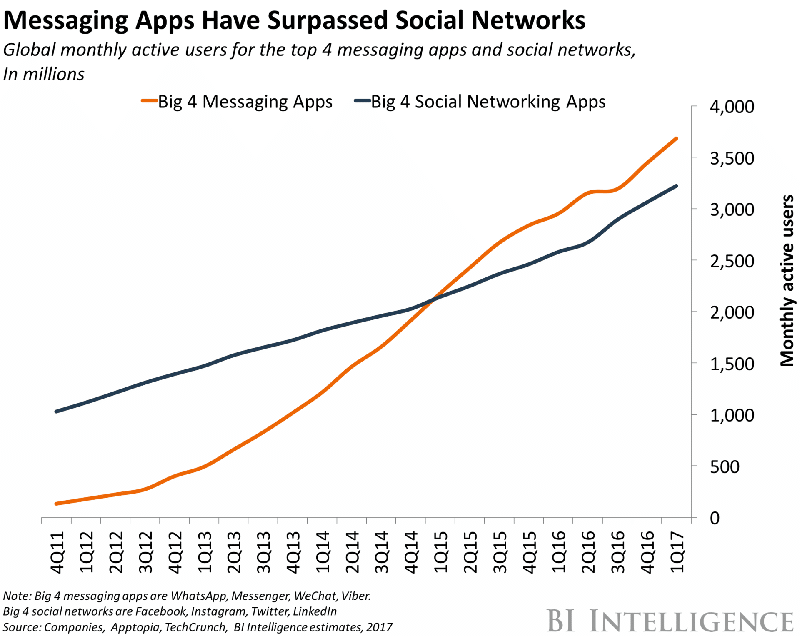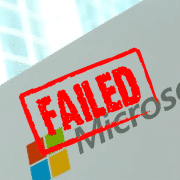Brand Leader and Interview Specialist
Chatbots have already taken over in some ways. In early 2015, the top messaging apps such as WhatsApp, Facebook Messenger, WeChat, and Viber surpassed the big four social networking apps such as Facebook, Twitter, Instagram, and LinkedIn.
A Brief History of Chatbots
The story of bots begins with their ancestors, the friendly robots of the last millennium. The term robot is only a century old. Invented by a Czech playwright based on the Slavic word “robota,” which means “slave labor.” Considering its origin adds an extra layer of irony to all the recent talk about the arrival of our “robot overlords.”
Robots are meant to serve humanity (hopefully not literally) by eliminating tedious, dangerous, or exhausting workloads. In that way, robots can be seen as the heirs of the first Industrial Revolution in the 18th century, when metallic machinery and steam power replaced animal power for the most taxing physical labors.
This indescribably massive break from the past reshaped the world into a network of manufacturing centers inside rapidly expanding cities. That expansion has never ceased. Next came specialized machines for assembly lines in the 19th century, followed by computers, the internet, and logistics containerization in the 20th century.
Chatbot Market Share Trends and Growth
We are in the midst of the fourth Industrial Revolution in the 21st century. Propelled at rocket speeds by a new generation of robots and bots, which are the streamlined technology equivalents of their clunky, anthropomorphic cousins from the last century.
Although Eliza in the 1960s has been credited as the earliest chatbot, bots as we know them today truly emerged along with the birth of the web in the early 1990s, including Google’s proto-bot search algorithms.
Bots have already taken over in some ways. In early 2015, the top bot-based messaging apps (WhatsApp, Facebook Messenger, WeChat, and Viber) surpassed the big four social networking apps (Facebook, Twitter, Instagram, and LinkedIn) in global active monthly users:

Chatbots by the numbers:
Here’s a quick overview of where bots stand:
- At least 10,000 companies are developing or using bots for customer care.
- Harris Polls indicate that 37% of Americans would be happy to make a purchase using a chatbot.
- Juniper forecasts that chatbots will save businesses $8 billion per year by 2022, up from $20 million in 2017.
- Grand View Research forecasts that the global chatbot market will reach $1.23 billion by 2025, showing a compounded annual growth rate of 24.3%.
- Additionally, 45% of the global chatbot market of end-users prefer primarily communicating over chatbots for customer service interactions.
- 80% of Oracle executives 80% use chatbots or plan to incorporate them by 2020.
- Additionally, 48% already use automation technologies with another 40% planning to implement said technology by 2020.
Any doubt about chatbots has clearly been squashed, as companies that have not yet embraced more innovative technology are feeling the pressure to integrate to improve efficiency and profitability.
Chatbots are Redefining These Industries and Sectors
Chatbots for customers get a great deal of coverage, but bots, in general, are also redefining industries like:
- Wellness – where emotion-sensing bots are helping people deal with stress.
- Eldercare – where support-bots are helping seniors stay mentally sharp and socially engaged.
- Education – where students already rely on Study Bots to help them navigate the higher education experience.
- Manufacturing – where firms of all sizes are investing $250 billion for smart manufacturing bots in 2018.
- Real Estate – where bots can alert property seekers to new listings in the area, along with advice on loan options that are relevant to specific buyers.
- The Public Sector – where swarms of micro-bots can clean out 95% of the lead from polluted water and “parasitic bots” clean the air of Hong Kong.
- Aerospace – where NASA engineers are planning to deploy bots to build 3D printed homes on Mars before astronauts arrive.
Naturally, this doesn’t mean that all bots are being used for the public good. Bots, like other tools throughout history, serve the goals of their wielders, which eventually leads to abuse and conflict until there can be adequate oversight and public agreement on terms of use.
The prime example of that is the developing story of how bots controlled by malicious agents have shaped the national dialog in a number of ways, changing our collective understanding of what truth means in a world of crumbling authorities.
Three Waves of Chatbot Growth
PwC UK projected the future of bots is arriving in three waves:
The algorithmic wave
Happening now, this includes chatbots, analytics applications, and the automation of heavy computational tasks.
The augmentation wave
In the decade ahead, higher administrative functions and decision-making will be handled by dynamic bots that communicate regularly with their human counterparts and conduct independent statistical analyses of unstructured data.
The autonomic wave
Arriving by the mid-2030s, chatbots will be our caretakers, solving problems we don’t understand dynamically in real-time, driving our cars, controlling the planet’s tightest resource bottlenecks, and ushering in the future we can only dimly perceive right now.
Like electricity and then the internet, chatbots are likely to disappear from our conscious awareness in the years ahead as they integrate themselves into everything we touch and everywhere we go, both in cyberspace and in the real world. We won’t really notice them anymore because they will function as extensions of ourselves.













